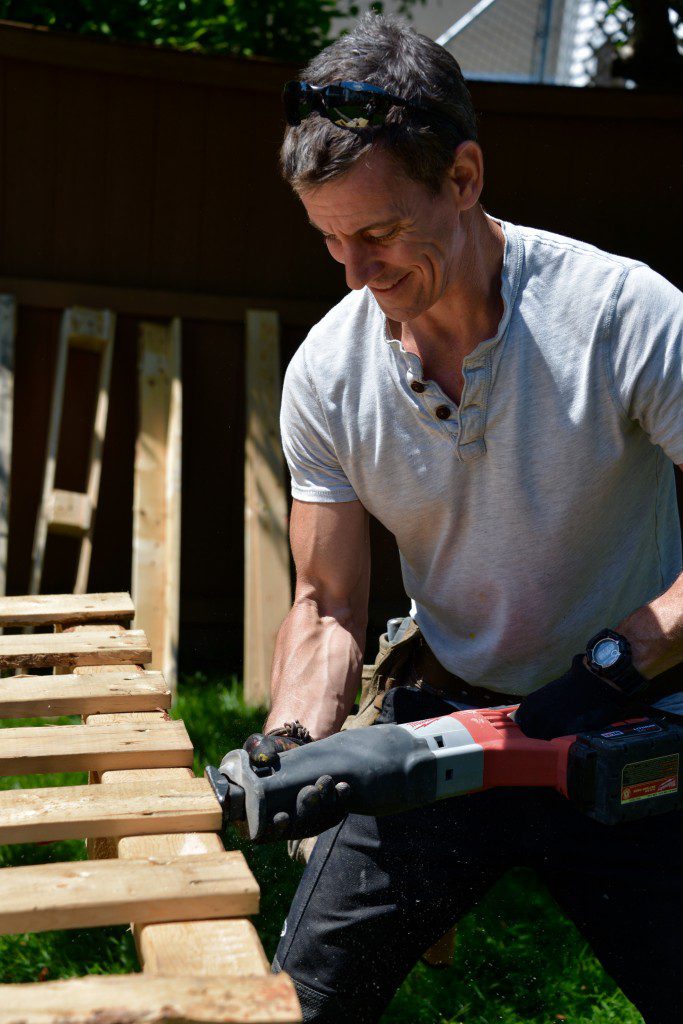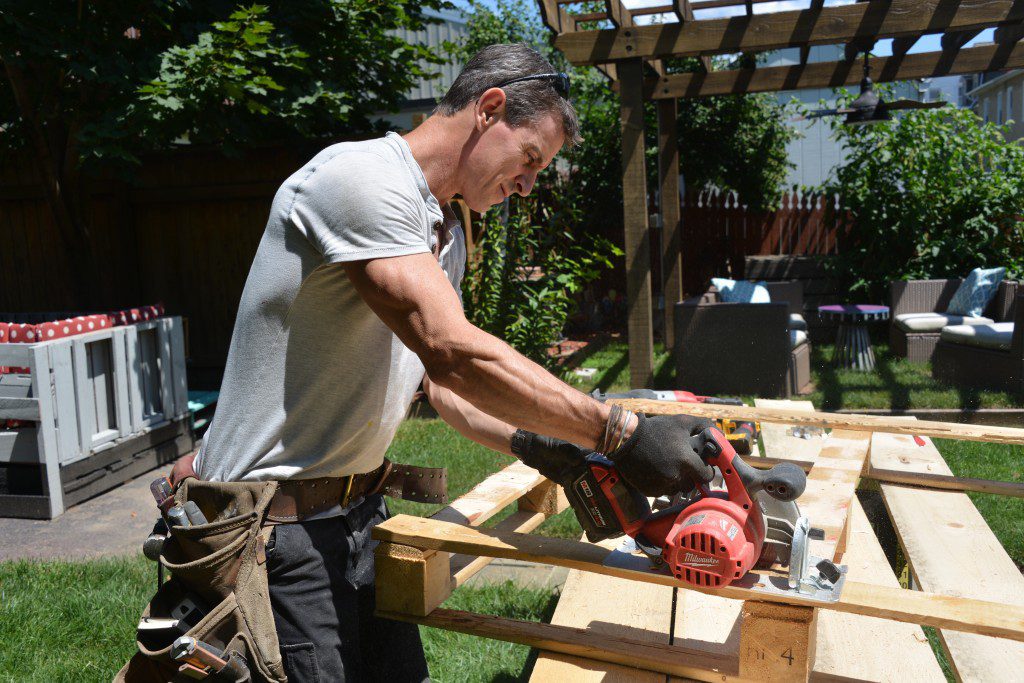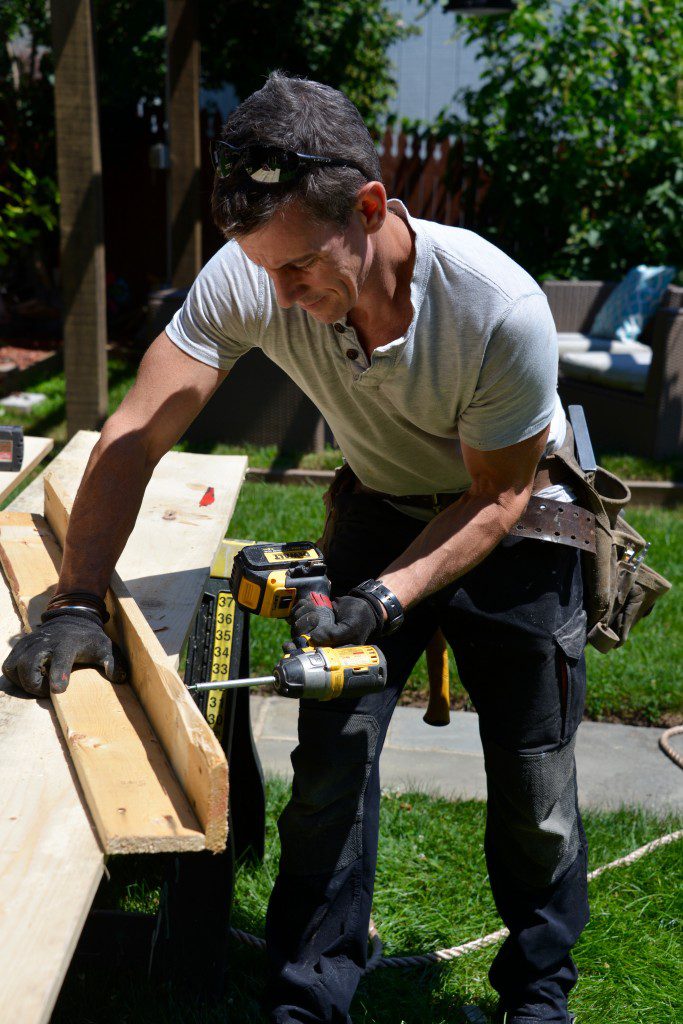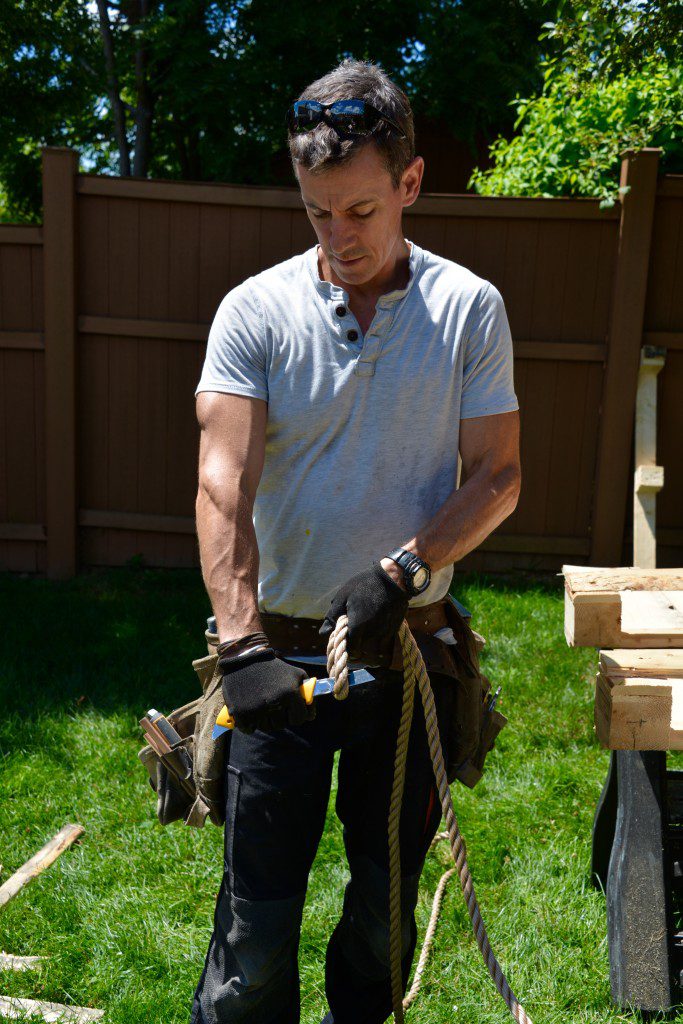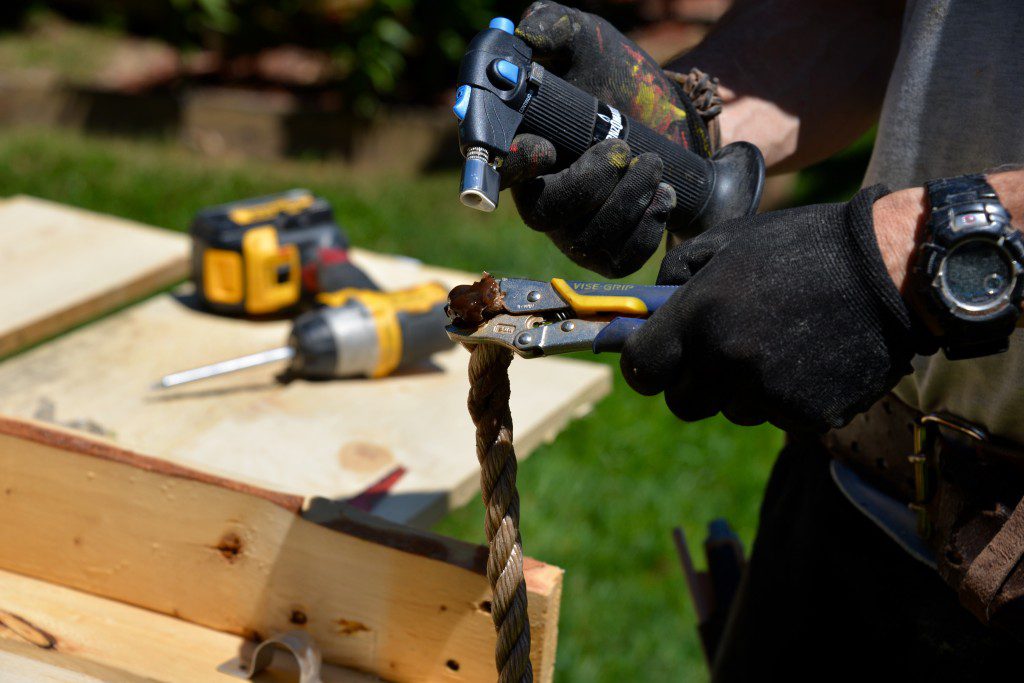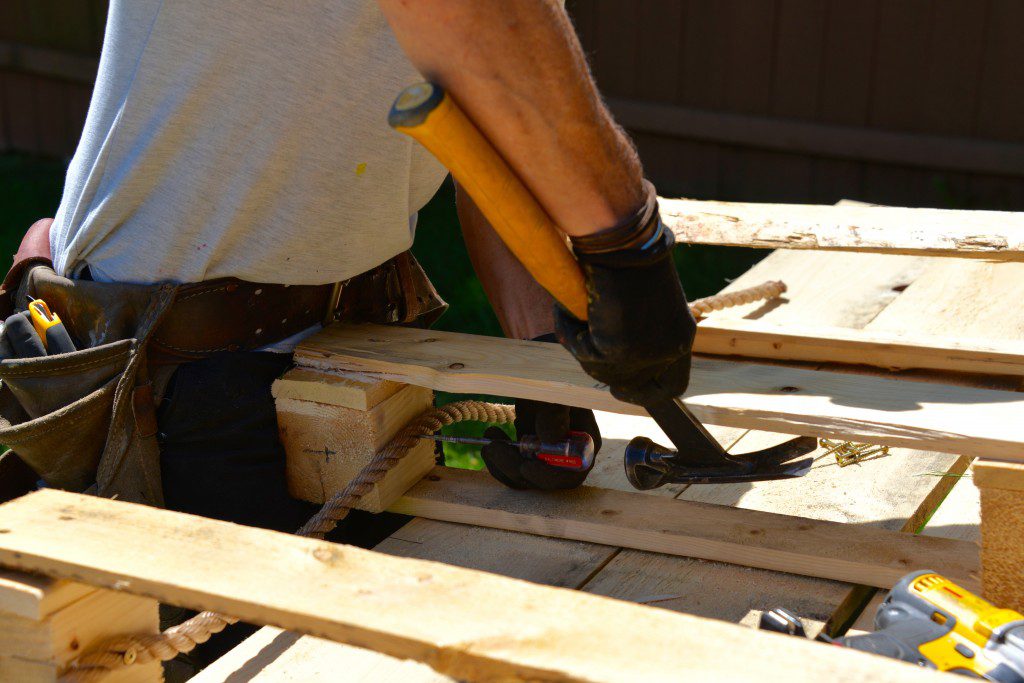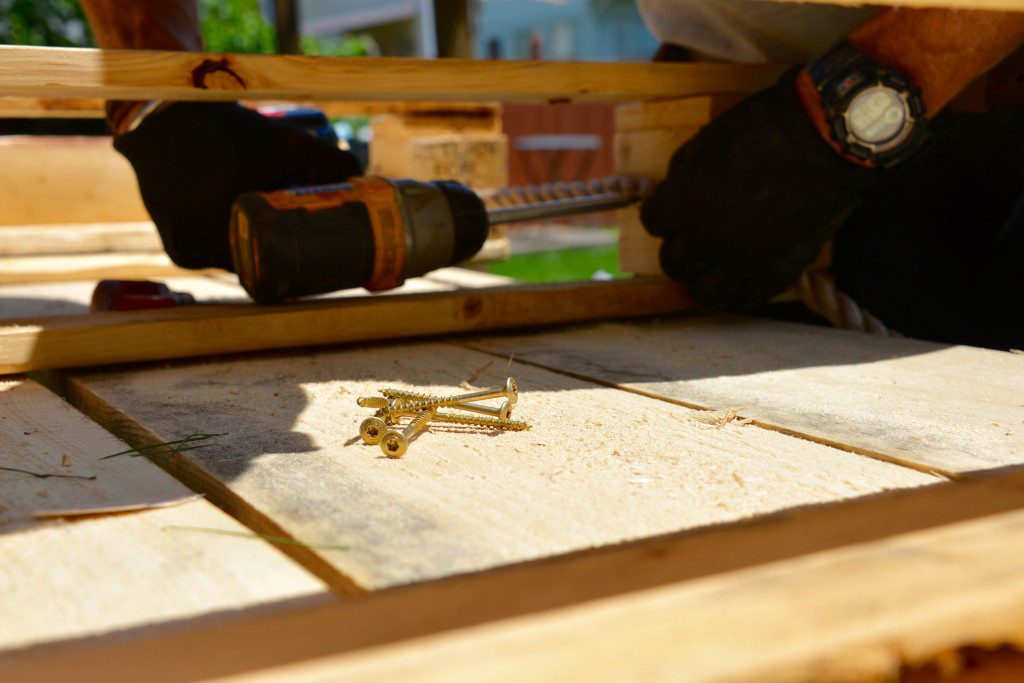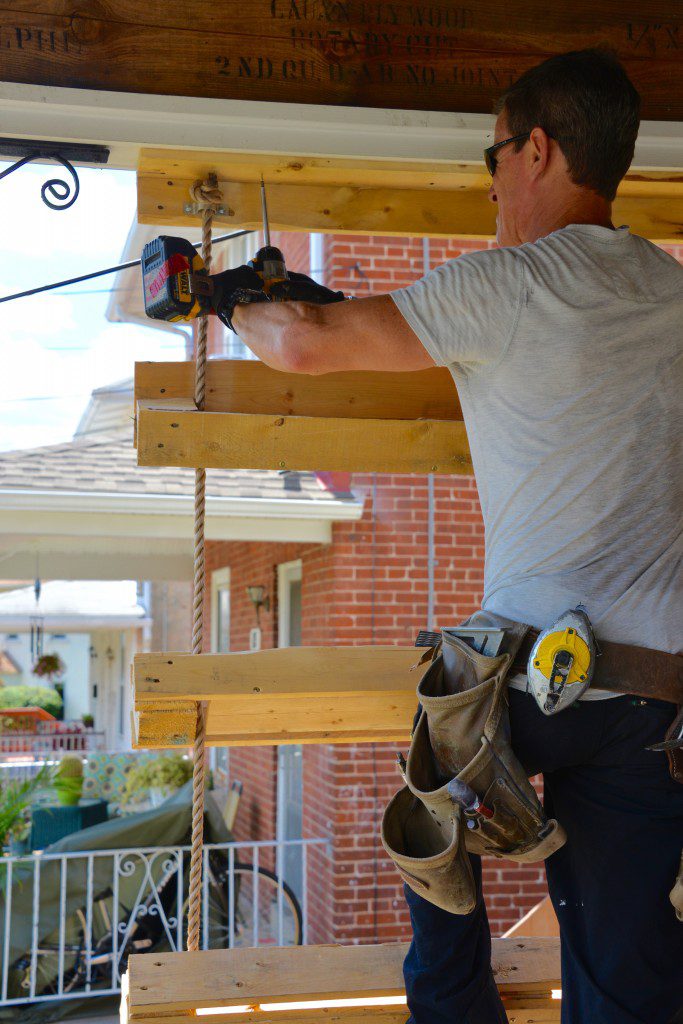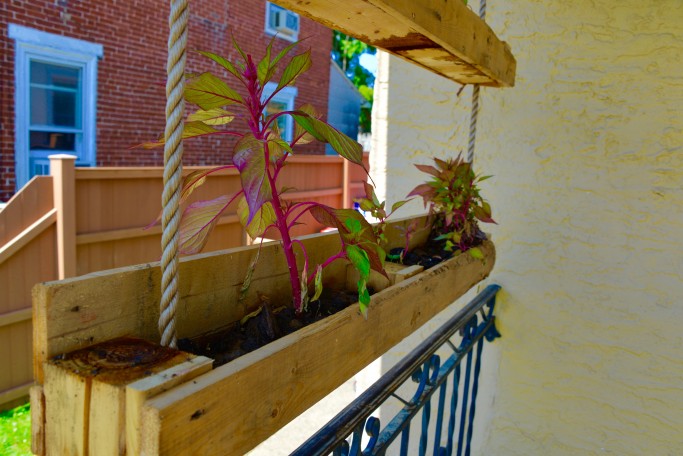Pallet + rope + plants = The Hanging Gardens of Pallet-on. The 8th Wonder of DIY!
Design. I designed this pallet project to display something I love in a place I love, namely: Flowers and plants and my front porch. It takes up zero floor space. And it’s what I call an ‘open barrier’. I’m not saying my neighbors chew with their mouths open or anything. I’m just saying that IF they did…well…You get it. Here’s how I made the Hanging Gardens of Pallet-on.
Dissect a pallet. For the pallet I had, cutting the end sections and middle section out conveniently created the planter box…almost. I also had to cut planks off the rest of the pallet for backs and bottoms. I used my reciprocating saw to cut the nails.
The hanging part. I hung my pallet project from my porch which means I needed something to connect the ropes to and something to connect the whole thing to the porch. Long story short, I made an L out of two pallet boards and some 2-inch washer-head Spax screws. I used those because I knew threads would cut into the pallet wood well and the flat heads wouldn’t countersink and create splits.
The rope. The big challenge with the rope was to keep it from fraying at the ends and unraveling. I bought 1-inch poly line from a home center and fused the ends with my Bernzomatic torch. It would have taken six years to do this with matches or a lighter.
Next I payed out about 4-feet of line for each vertical, tied a knot in one end and used a 1-inch pipe collar screwed to the L to hold them in place.
Then I spaced each planter box about 1-foot apart along the line and fastened with 2-screws on each side (total: 4-per box). Tip: Drive a scratch awl or nail set through the rope fibers to create a little channel, then pass the screw through and fasten. I used the washer head screws again here, which compressed the rope against the pallet and locked everything together.
Box bottoms. With extra pieces left over from the pallet, I fastened bottoms to the planter boxes. It’s OK if there are gaps. Planter boxes are supposed to leak.
Fill and plant. I filled the planter boxes with soil and compost from our compost bin and planted one of my favorite all time plants—amaranth (quick Thank You to Burpee for telling me what they are). They’ll grow hearty and red and give me color in a place I love to hang out late into the Fall.
This is a sponsored post. I am a Bernzomatic Torch Bearer, though all opinions expressed are my own.
